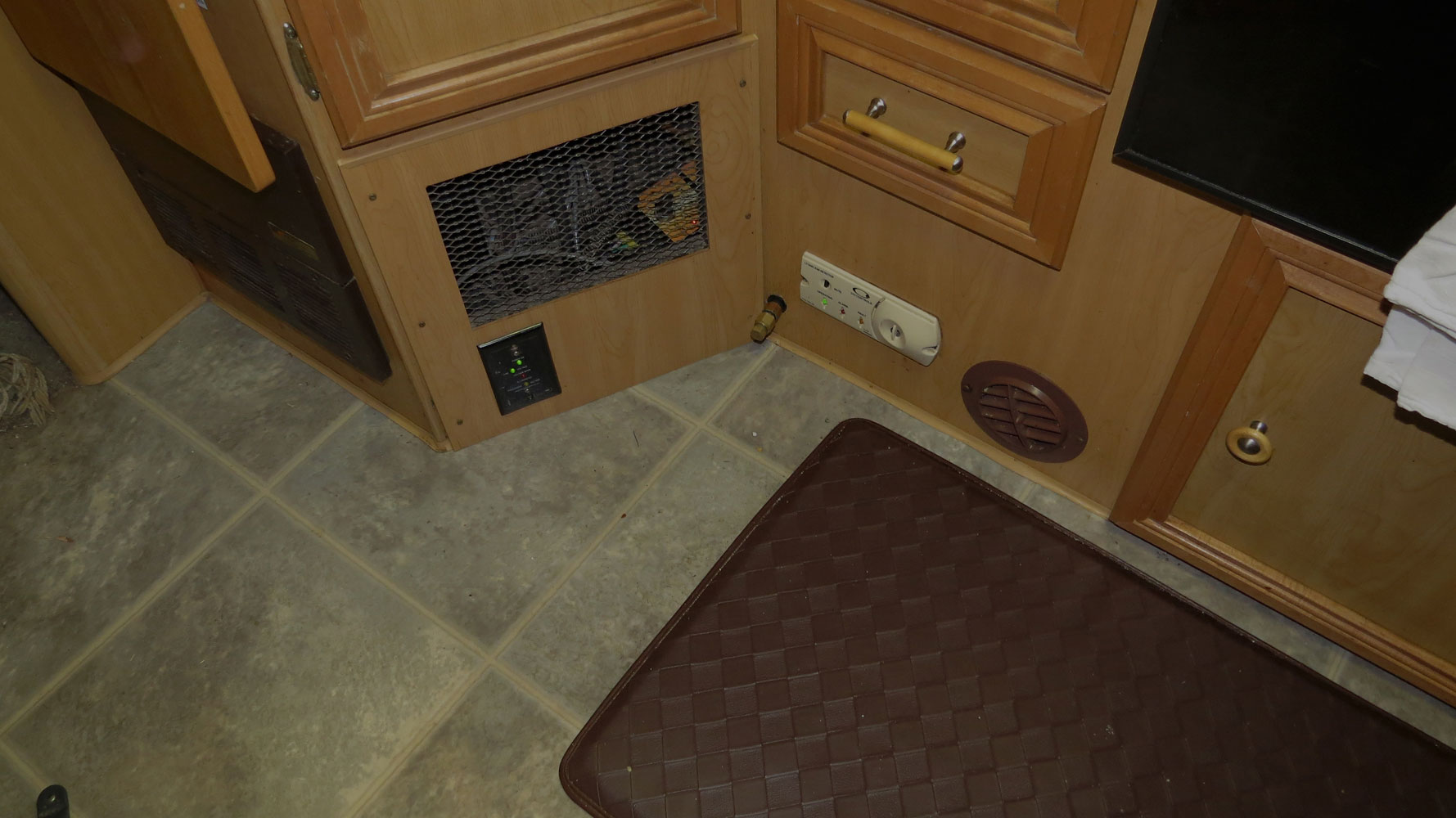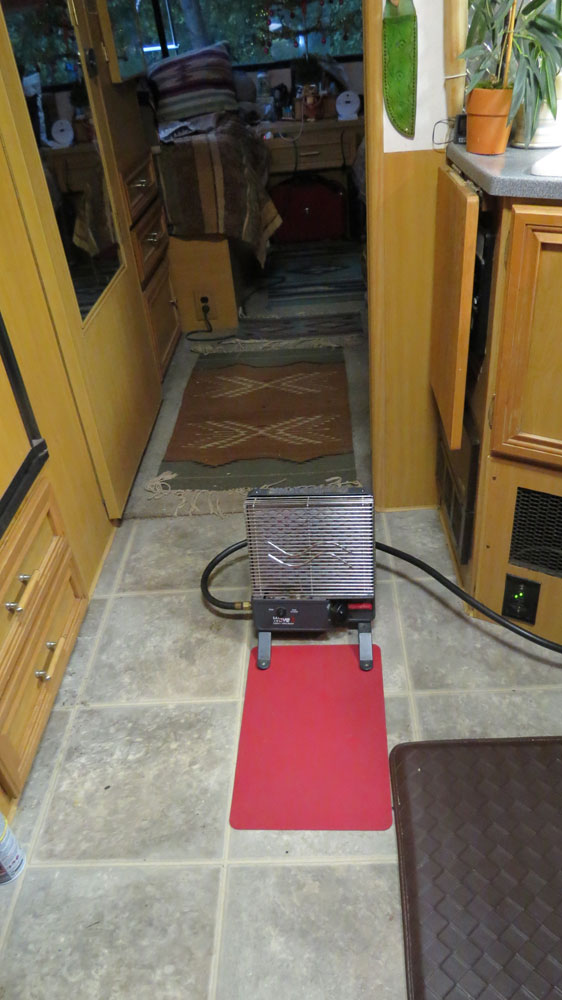Now that winter is upon us, there's been quite a bit of discussion of catalytic heaters over on the Lazy Daze board. While many folks have mounted their catalytic heaters (usually an Olympian Wave) permanently, we had ours installed so it can be moved, or put away entirely.
With this discussion, several folks have asked for pictures of our setup, so I decided that I would do an entry here on the blog. If you're not an RVer, this might not be of any interest to you (or maybe it will?). Anyhow, you have been warned.
When we first got our catalytic heater, we got a Wave 6 figuring that bigger is better. A few uses disabused us of this notion, and fortunately, we found friends who were amenable to a trade.
For mounting, we decided on a quick connect valve, but we knew we wanted a hard wired on/off valve. A bit of scouting around found the best spot for this was under the kitchen sink. We could hook in to the propane line for the stove, and we could use the empty space under the kitchen drawers as a place to store the propane hose when not in use.
Here's a picture of the connection to the propane. The red handle is the shut off valve. We make it a practice to turn the propane off at this valve every time we turn the catalytic heater off. Pardon the dust, I do my very best to keep this clean, but it's kind of intimidating with all this electrical equipment!
You can see the actual heater hose extending from the cabinet face next to the propane detector.

Here's a shot of the area when the heater is not in use. After use, we simply push the hose back in the area behind the cabinet. As you can see, the hose sticks out just a bit, but it's pretty inconspicuous. You'll also see that the screened cover is back in place under the sink. Originally, this panel was screwed into the wood, but we removed it, then sawed off the screws flush and glued them in place (this pleased me cosmetically). Then we simply placed velcro on the back of the panel and the front of the cabinet. It holds the panel in place just fine, but others may find a cleaner solution for attaching the panel.

Here's a shot of the hose when it's extended and attached to the heater for use. While it looks like it's in the way, it's never been a problem for us. The hose is somewhat stiff, and we always know when it's in use. We've had this setup for over five years now and it works well for us.

Usually we start with the heater facing the front of the motor home. We usually put it in the kitchen as you see here, but it can be moved forward into the actual living area if we like, due to the length of the hose. You'll notice a red mat under the front of the heater. This is a silicon baking pad. While the heater doesn't put out a lot of heat straight down, sometimes, we feel it gets a bit warm in front of the heater. The silicone pad simply makes sure no extra heat reaches the flooring in front of the heater.

After a while, when the rig is nice and toasty, we'll take the heater into the bedroom area and face it towards the back of the rig.

One huge advantage of the catalytic heater is that it requires no battery power to run. It's also extremely efficient on propane, and quite small.
I should also mention that it's important to always have ventilation when using a propane heater. We open the vent in the bathroom, which seems to offer plenty of airflow. We also turn it off at night (we never sleep with the propane heater running). Also, we always turn it off when we leave the motorhome.
We use our Olympian Wave 3 about 80% of the time. The furnace is awful handy, but it's very noisy, pretty inefficient and uses a good amount of both propane and battery power.

7 comments:
I've read that you have to open a window or a vent, I'm wondering what you open and about how big of an opening. I'm thinking of getting one of these heaters.
Hi Kate,
Thanks for the great pictures and info. Thinking about making the installation in our 27MB. Where do you store the heater and do the legs remove or rotate for storage?
Thanks, Bill
Warmest wishes to the two of you!
I like having the option to move the heater where needed rather than having it permanently in one place. This is something we still need to do.
Thank you for the pictures Kate. How long is the hose you're using? Do I understand this setup correctly that you pull the LP hose out through the small hole when the heater is in use and feed it back in when you disconnect the Wave3?
Thanks,
Richard
ANSWERS-
The legs are removable, and since the heater itself is so small, we usually just store it behind one of the chairs.
I should also mention, we bought a cover to protect the heat pad. Once it gets dirty, it has to be replaced so a storage cover is a must.
Terry thinks the hose is 12 feet, but we ususally don't use the full length, we just use it as shown in the photos.
Yes, the hose pushes back in to the small hole. That was why we chose this spot for installation, since the area behind is empty. Storing the heater is no big deal, but the hose is pretty stiff and we liked the idea of having it out of the way when not in use.
Heaters like the ones from heater.com always appear as a life saver during the winter season. It's great to keep at least a portable heater handy to help keep warm during those cold nights.
Post a Comment